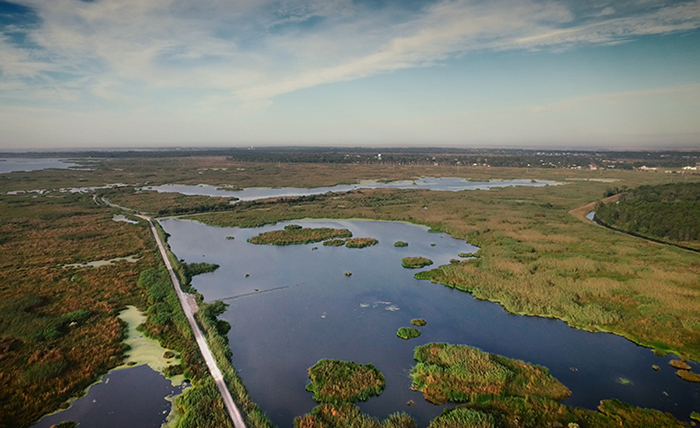
In response to a report titled The Business of Planting Trees originally published by The Nature Conservancy and the World Resources Institute.
By PJ Marshall, Executive Director and Co-Founder of Restore the Earth Foundation.
In this report, the economic valuation of planting trees is based on sales. The math is simple and investment prospects strong. In summary, planting trees is becoming big business. This report is an important step in bringing landscape-scale restoration to the forefront of climate solutions.
Yet, if we are to secure the billions of dollars needed to support the goals set out in the Paris Agreement, we cannot ignore other innovative valuation and funding models. By focusing on moneymaking ventures, we are missing an opportunity to engage a broader audience. While most corporations are not looking to get into the “business” of tree planting, all have much to gain in overall sustainability from healthy ecosystems.
We have found that having a strong business case inspires landscape-scale eco-restoration investments—projects scaled from 10,000-100,000 acres—among corporate sustainability visionaries, not only eco-entrepreneurs. An effective business case provides valuation and funding models that integrate the environmental, social and financial objectives of those with a shared value in ecosystems: public agencies, corporations, impact investors and philanthropists.
With a focus on restoring 1 million acres of forest in North America’s Amazon—the Mississippi River Basin—Restore the Earth addressed one of the biggest challenges in building the business case for landscape-scale restoration: capturing the full monetary value created by restoring degraded lands. When complete, 1 million acres of forest ecosystems will be revitalized in North America’s Amazon, reducing the United States’ climate footprint by 2%. This will also begin reversing the impacts to the dead zone in the Gulf of Mexico by 12% and generate billions of dollars in social and economic value.
Measuring the full value of landscape-scale restoration, beyond the value of the trees, is essential to attract multiple partners. Using our EcoMetrics, we account for the social, economic and environmental benefits of landscape-scale restoration and monetize the impact and value created. This accounting is fully documented and third-party verified in a report ready for audit. Investors are able to communicate in financial terms the co-benefits of their investment in ecosystem restoration work and demonstrate market and non-market returns to all stakeholders.
We work with funding partners from diverse sectors who come together to aggregate economies of scale necessary to implement complex and costly landscape-scale projects. Using an innovative funding mechanism, private contributions are leveraged to unlock public funds to amplify the investment and scale of restoration. Restoration at landscape scale maximizes the positive impacts on the ecosystems, habitat, biodiversity and communities, all in a self-sustaining system.
Once the land is restored, the initial investment is recaptured by Restore the Earth to repeat the restoration cycle. Through our Revolving Fund, we are able to generate a steady stream of capital to propel and expand our restoration work.
On average, for every $1 invested in restoration generates $9 in social, economic and ecological value. A recent assessment of one reforestation project forecasts $36 in value creation for every $1 invested.
While ROI and SROI can vary, landscape-scale restoration generates unparalleled financial and social returns. Both the resulting market and non-market values can be accounted for on a corporation’s integrated reporting balance sheet. A company is also able to provide for greenhouse gas (GHG) offsets at a significant discount to their own internal price on carbon. Voluntary forest carbon offsets are becoming a popular option for businesses looking to strengthen or complement their carbon neutrality portfolio.
The idea that landscape-scale restoration offers a self-sustaining climate solution with unprecedented returns on investment is taking root. Thanks to a growing body of evidence that demonstrates the integrated value of intact ecosystems, investment in this “engineered-by-nature” climate solution is gaining traction among forward-thinking organizations worldwide.
To maintain this momentum, it is essential that we showcase the full spectrum of restoration investment models and opportunities. We must shine a spotlight on new and innovative cross-sector collaborations with direct market and non-market returns, not just those with the sole goal of turning a profit.
This article was originally published on LinkedIn.